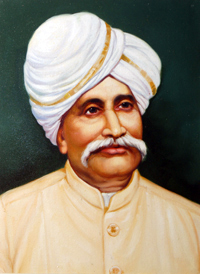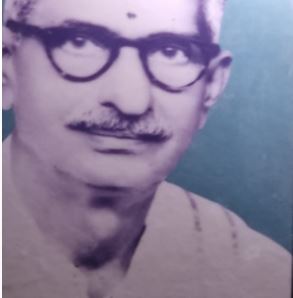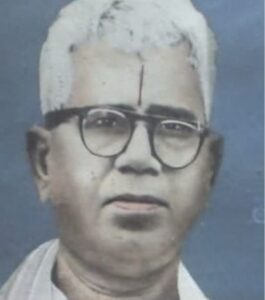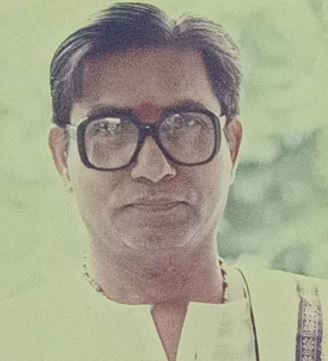(Kuradi Chandrasekhar Kalkura)
Udupi town, located between the Arabian Sea and the Western Ghats in Karnataka, was found in the 13th century by the Hindu saint-philosopher Madvachayra. Sri Krishna Mutt of Udupi is dedicated to Lord Krishna, which is an important pilgrimage centre in South India. The temple used to serve free meals to certain classes of people. Hence a large number of persons were provided with an opportunity to get some training in the kitchen.
This tradition of mass feeding of the temple earned the Lors Krishna the moniker of Anna Brahma.
With the commencement of road and rail transportation, wholesale permanent migration from the district too far and wide started at the beginning of the 20th Century. Exploring better horizons cooks started moving out. Mangalore, the Dist headquarters was well connected to Travancore Cochin (as present Kerala was then known ) and many parts of Madras province, including the big towns and cities like Kochi, Calicut, Trivandrum, Coimbatore, Salem, Madurai and Madras. So the people in the southern parts of the district started pinning their hopes on South and East.

On the East, they moved up to coastal Visakhpattanam and Srikakulam and also to interior Rayalaseema. People from the northern part of the district crossed the Western Ghats and settled in the Princely Mysore State, the Kannada speaking (Hubli, Dharwad, Belgaum, etc.) areas of the Bombay Province, Southern parts of Marathi speaking areas (Kolhapur, Pune, Sangli, Satara, Solapur, Sindugurg, Ratnagiri, etc.) and Nizam state’s Hyderabad.

Some more ventured to travel to Bombay by steamer. None of them had a second pair of clothes. Many fled home. The duration of these journeys varied from two days to a week. This all happened when the colonial economy and administration started expanding because of the extension of railways which made travel to far off places much easier. This resulted in the grown of hotels everywhere.
You May Like
https://trendingtelugunews.com/english/trending/tracing-the-history-of-kurnools-once-popular-kalkura-udupi-hotel/
Initially, the migrants Udupit Bramins worked with somebody and in course of time became entrepreneurs themselves. Almost for the whole of the 20th century, Udupi Brahmins dominated the hospitality industry in S.India and Bombay city.

Even now it is a brand name in middle class south Indian restaurants. Many anecdotes are weaved in praise of their adventures. e.g. Tenzing Norgay and Edmund Hillary were offered Garam Chai by Udupiwalah on Mount Everest; so also Astronaut Neil Armstrong on the moon.
These Udupi Brahmin Hotels filled the gap created by the disappearance of Pootakullammas or Adagoolajjies (residential Mess) and catered to the needs of the locals and travellers.
With their culinary expertise acquired at Udupi, Udupi Brahmins became popular by preparing tasty food, suitable to the local needs. They earned not only wealth but goodwill, name and fame also. They served free food to the leaders of the national movement, even in the jails. Many of them sported Khaddar cloth and Gandhi cap. Thus they were indirect participants in the National Movement too. They prepared the ground for the present-day classified culture, i.e. Star Hotels
Migrants shared all that they acquired; wealth, goodwill, name and fame with their Janmabhoomi, native place. They invested a good portion of their savings in their ancestral properties, helped build academic institutions, educated their kith and kin, and renovated the village temples. More than anything else, entrepreneurs provided employment to their near and dear, and residents of surrounding areas.

Much unlettered youth of all castes and communities were employed and in course of time such youth were groomed, as entrepreneurs themselves. They included the locals also.
Another important area where the Dist opened its wings was banking. Canara, Syndicate, Corporation, Vijaya and Karnataka were the main banks that flourished and extended their activities, through branches all over the country.
While the Hotel industry provided employment to the unlettered, Banking was a boon for the literates. Banking titans like TMA Pai, TA Pai, KK Pai and KSN Adiga used to say that both these institutions worked in tandem.
When India attained independence in 1947, there were only three institutions, St Aloysius, Govt, and St Agnes Colleges in the Dist, all in Mangalore. All were affiliated with the University of Madras. Madras was the destination for postgraduate and professional studies.
There were four high schools in Mangalore (St Aloysius, Capitanio, Canara, Ganapathy) two in Udupi (Board and Christian), and one in other taluk centres managed by the Dist Board. There were some more like Milagres High School, Kallyanpur and National High School, Barkur in Udupi Taluk. In all, there might have been around forty.

In the course of time, professional academic institutions of higher learning, with national and international fame were established in the private sector. Academy of General Education, Manipal, floated by Dr TMA Pai, a deemed to be University, a Konkani Minority Institution with about one hundred disciplines excelled.
Now hundreds of colleges and high schools in four figures have sprung up. All the arts and science colleges in the Districts along with Kodagu Dist are affiliated with Mangalore University. Pilgrimage tourism is attracting devotees from across the country.
The capital started flowing into the Dist through all these sources. Parasurama’s curse must have been remedied. The migration from the district was so rampant that it triggered a joke that every third person in Bengaluru is a Udupiwalah.
Migration from the district is still going on, this time it is for better opportunities, not as a survival strategy. The joke is that if all those migrated were to visit their ancestral homes simultaneously, they would face severe water scarcity.
I was born on 20th June 1940, in panoramic Kurady, a hamlet in Hanehalli village, near the historic Barkur in Udupi (Present Brahmavar) Taluk, on the northern bank of the River Seetha. Kurady is 22 km from the famous pilgrimage centre, Sri Krishna Temple, Udupi.
We cannot think of a world without migration. Without forgetting the homeland, the migrants got assimilated into the local cultures. They became part of the local population by learning their languages and customes. Locals accepted the Udupis with open arms. If we go through the history of the human race, it reveals that most of the adventurers come from the middle classes. They had suffered, learnt lessons and by dint of hard work, honesty and sincerely came up in life. Udupi Hoteliers are one such glorious chapter in the history of human civilization.(concluded)

(The author is an advocate and a member of the family that started Kalkura Group of Udupi Hotels in Kurnool, AP)
Read part (1)
https://trendingtelugunews.com/english/trending/how-udupi-brahmins-dominated-hospitality-in-20th-century/
Nicely written and very informative. It is rightly said that if one spends time reading few pages, one can gather years of experience of the author.
Article has come out really well sir. I am proud to have my roots in Udupi. Our ancestors despite living in penury, didnot sit back and expect someone else to change their destiny. They went out into the unknown world to explore and settled down there, earning for themselves supported their families back home and also contributed to the land they made their home in every possible way. Thank you for the article
The great quality of the Udupi Brahmin migrants is seamless assimilation into the local community. Nowhere they are seen as outsiders. They respected the local traditions and sentiments and locals reciprocated them in equal measure. People like Kalkura Garu are shining examples of this cultural unity. They are addressed as ‘Swamy’ in some areas. I have been observing this down-to-earth bilingual pundit for over 30 years and found that he is more local than anybody else in Kurnool. It is not an exaggeration if say three fourth of the city’s population knows him by name and calls him Kalkura Swamy.